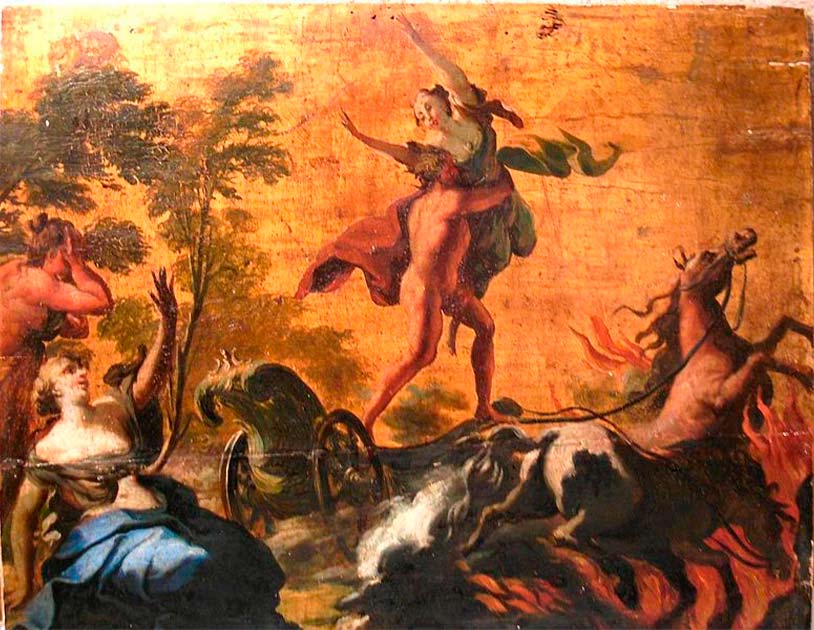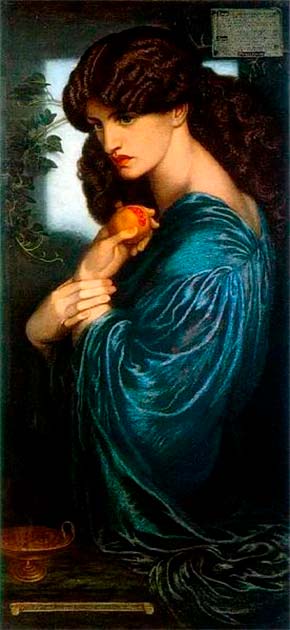The ancient Greeks had a pretty good thing going on. They came up with democracy while most other civilizations were still smacking each other about with clubs, they composed poetry that is the envy of every subsequent age, and their architecture inspired everyone that followed, from the Romans to the United States.
To top it all, it seems like they knew how to enjoy themselves as well with a drink they called “kykeon”. The beverage of choice for everyone from commoners to epic heroes, its apparently psychoactive ingredients saw it used for everything from communing with the gods to starting your day in the strongest way possible.
It is true: the ancient Greeks said that kykeon was drunk for breaking fasts. It is also said to have some psychoactive elements responsible for heightening consumers’ experience.
Apart from that, it also had good digestive properties. Aristophanes’ depict Hermes recommending kykeon to the hero of his story, apparently as a curative for eating too many nuts and dry fruits.
The origin of this drink was from what are known as the Eleusinian Mysteries, where it was considered a traditional beverage. It was among the most famous aspects of Greek religious rites in ancient times.
Sounds great, hey? So how do you get some?
How was Kykeon Made?
Disappointingly, we don’t really know. There was no specific recipe for making kykeon, but it seems it was made out of water and barley. Depending on people’s taste preferences, honey, cheese, herbs and wine can also be added to it.

But this beverage most definitely had some psychoactive properties, which made people consume it with more passion and desire. What ingredients caused this remain unclear.
It was indeed the psychoactive elements that made this drink so popular in ancient Greece. People have reported experiencing hallucinogenic visions and feeling an alteration to their consciousness. This wasn’t just drunkenness either, rest assured the Greeks knew what that was.
But at the same time, it had healthy properties and promoted a buoyant mood. It would be used for ceremonies, apparently to help people experience the hidden mystery behind death and rebirth.
- What Was Silphium? Lost Wonder Drug of the Romans
- The Flesh of a God: In Search of a Mystical Mushroom
There are some clues as to how the psychoactive effects were achieved. Kykeon’s psychoactive properties are theorized to come from an ergot species growing on the barley, specifically claviceps purpurea. This fungus contains psychedelic alkaloids, which induce a similar effect to that of LSD.
There are alternate theories that kykeon might have been prepared from a different ergot species, possibly claviceps paspali, but this doesn’t naturally grow on barley but is found instead mostly in wild grass. The effect would be largely the same, however.
These alkaloids include lysergic acid, lysergic acid amide, ergonovine and hydroxyethyl amide, all completely soluble in water. Ancient Greeks would have collected the ergot from the barley (or perhaps the paspalum grasses), or otherwise it was added to the kykeon with the cereal grain.
When used in a traditional ritual, this process of collecting, mixing and making the drink was done by Eleusian priests. It was their special drug, and it allowed them to see the gods (I bet it did).
It was not without risks however, and a strong dose could trigger intense hallucinogenic experiences. People were said to have lost consciousness upon drinking kykeon, or to have felt extreme paranoia and fear at their surroundings.
There is also a possibility that psilocybin from psychoactive mushrooms was the active ingredient. The mushrooms would have been blended into the kykeon drink, and the effect. Or else it might have been DMT, which is found in several Mediterranean plants, such as Phalaris and Acacia.
The Eleusinian Mysteries
The Eleusinian Mysteries were celebrated every year, commemorating the return of Persephone from Hades for nature’s rebirth and life’s renewal. Kykeon was taken at the climax of this festival, where Eleusinian priests offered this beverage for breaking their sacred fast.
Research has been done for over two millennia on this ceremony and its associated drink. It appears to have been based on a truly ancient agrarian cult and a celebration of the passing of winter, restoring the earth to its fertile norm.

Thus, farmers can get back to growing vegetation after this celebration. It was not just the drink of champions but also the Greek peasants’ favorite beverage at this time.
It was considered a major festival during the Hellenic era and was even celebrated by the later Romans, who always did like to copy the Greeks. Moreover, similar agricultural celebrations were also seen across societies such as Minoan Crete and in the Near East.
It seems the drink has divine approval also. In Greek texts of The Homeric Hymn to Demeter, the earth goddess refuses to drink wine but happily accepts kykeon. This drink has also appeared in the Iliad and the Odyssey, and is also mentioned in Theophrastus.
- Dare You Enter the Ploutonion? Gateway to the Underworld at Hierapolis
- The Ayahuasca Hauntings: Who is the Hat Man?
As per the myth of Persephone and Demeter, the goddess of Earth, Demeter, was tending flowers along with her daughter, Persephone. They were in the field when god Hades looked up from his realm, which was in the underworld.
He coveted Persephone for her beauty and grace and schemed to abduct her. When Demeter got distracted, Hades opened up Earth and brought Persephone to his realm.
Demeter panicked and started looking around for her daughter, even talking to the Father of the Gods, Zeus himself, and asking for his help. But Zeus denied that he knew anything about what had happened to Persephone.
Demeter started searching for her daughter across all lands until she halted her quest to take some rest at Eleusis. In her distraction, she neglected her divine duties and the Earth started to die.
She went about disguised as an old woman to ensure that no one recognized her. The daughters of the city’s queen invited Demeter to their palace and interviewed her to work as a nursemaid and serve their young brother.
Demeter accepted this offer and looked after the young prince too. As she had already lost her daughter, she didn’t want anything to happen to that prince.
So, to ensure that she placed the young prince in the celestial flames to make him immortal. The Queen caught her in the act and lashed out at Demeter for thrusting her son into the flames.

In response, the Earth goddess became enraged and revealed herself, but decided not to punish the queen for her disrespectful deed, sparing her if the people build a temple in the name of Demeter in their city.
Therefore, the city did have its own Demeter rituals and used kykeon to celebrate them. Persephone herself was later released by Hades and returned to Demeter, but the six pomegranate seeds she had consumed while in the underworld meant that she had to return to be with Hades for six months of the year.
Thus, it is said when Persephone is with her mother, everything blooms on Earth, whereas when she is in the underworld, the Earth seems sad. Thus, a cup of kykeon is consumed in springtime, when Persephone returns from the underworld and her mother in the joy of her reunion makes the world bloom once again.
Top Image: Ancient Greek pottery, either depicting Briseis and Phoenix or Hecamede pouring kykeon for Nestor. Source: Louvre / Public Domain.
By Bipin Dimri